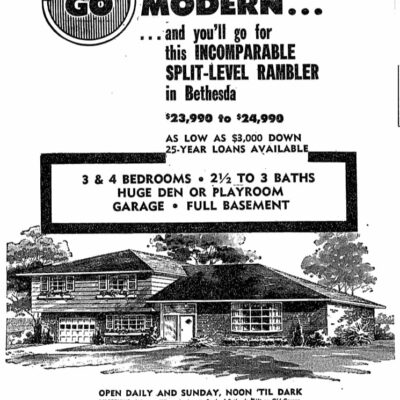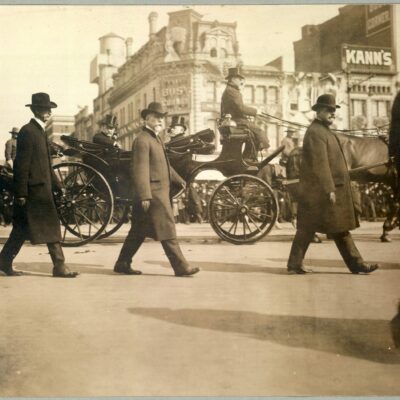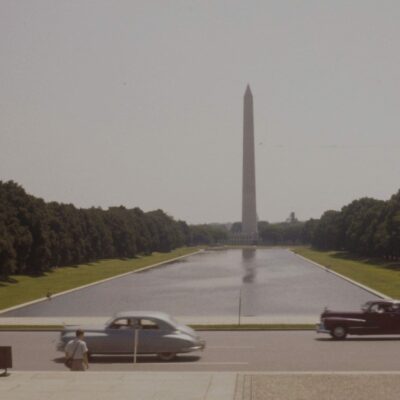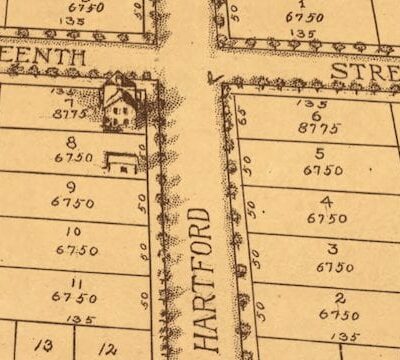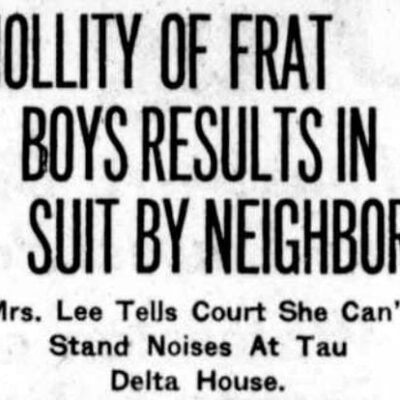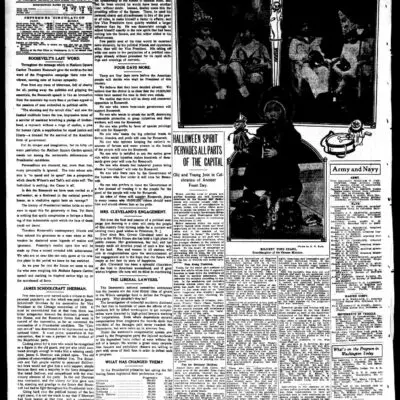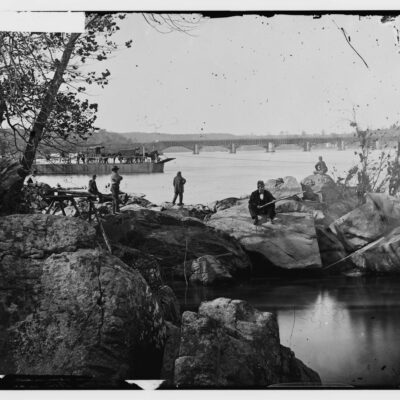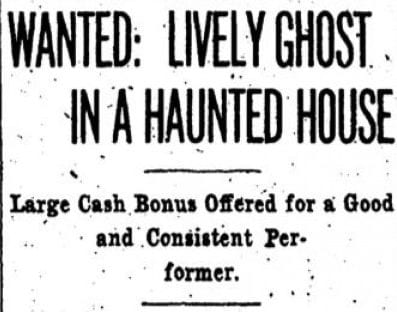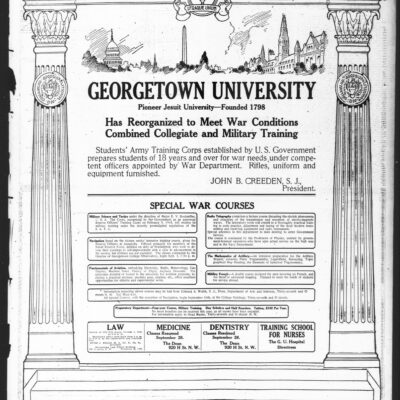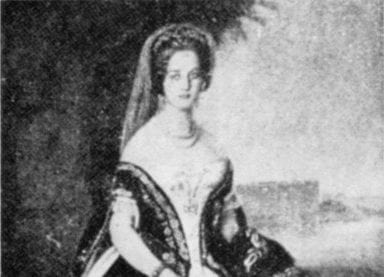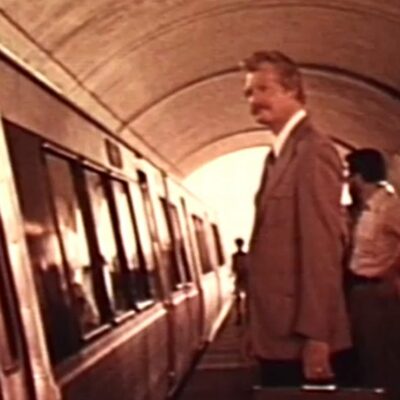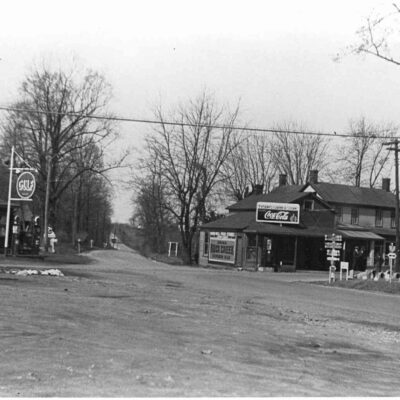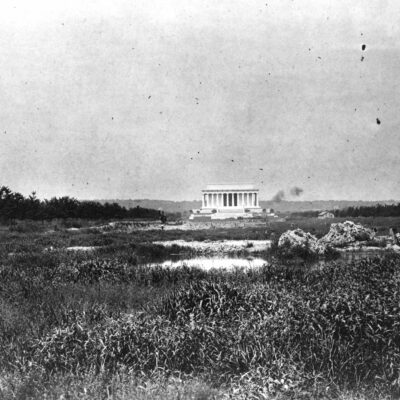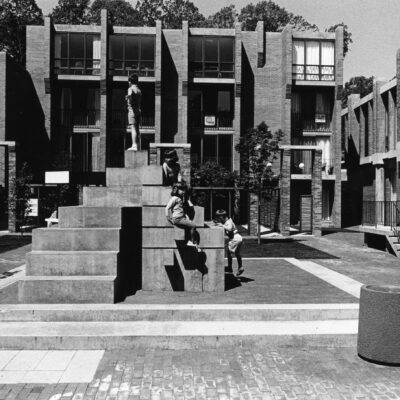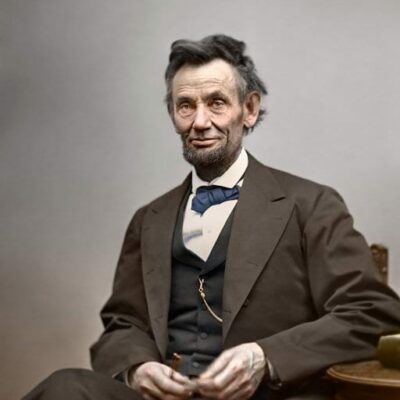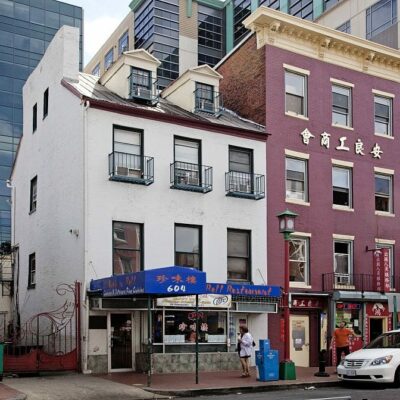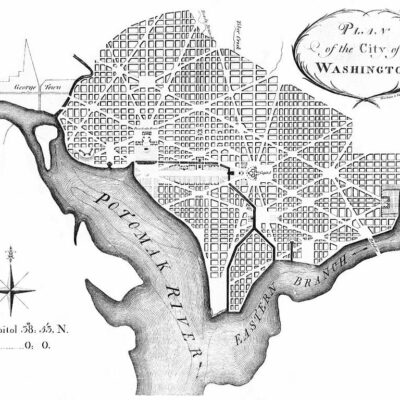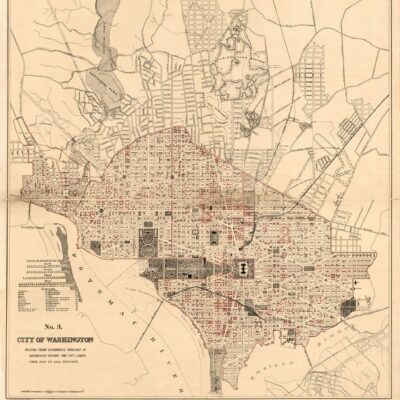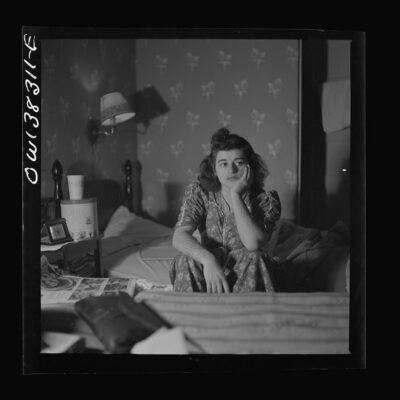As the hamlet of Georgetown grew alongside the capital, it became a place for foreign dignitaries to reside, hoping to include themselves in the upper echelons of society. Marriage between prominent families to secure wealth, reputation, land and good name was all too common in Georgetown. Soon, members of the diplomatic corps were marrying into these families to secure a position in American society.
Sometimes it was not just a marriage of convenience. In fact, it was very inconvenient that Baron Bodisco fell in love with Harriet Williams. It was not that she was already married or promised to someone else nor that her family too poor for it to be a positive match for the Russian minister. Her father was only a government clerk and thus they were not the most socially influential or richest of families, but they were descended from one of the founders of Georgetown, Ninian Beall. They were well off enough to educate Harriet at Miss English’s Seminary for Young Ladies. The same school that was run by the ardent secessionist, but Harriet Williams attended the school much before the Civil War. At this time, Miss English was only educating Georgetown ladies in the hospitable ways for which Southern ladies were and still are known. Even Andrew Jackson sent his daughter here while he served as Senator from Tennessee.
In fact, Harriet Williams was still at student at the school when Baron Bodisco proposed. That is what made it inconvenient. Young Harriet was sixteen years old. Baron Bodisco was nearly in his sixties.

Baron Alexander de Bodisco was the ambassador from Russia for seventeen years. His was officially the Envoy Extraordinary and Minister Plenipotentiary and he had the reputation of living up to such a lofty title. From his home in Georgetown, he would ride in a white carriage drawn by four black horses to the Russian Embassy. He was known to have a pretentious air about him, added to by the fact that he either dyed his air or wore a wig. The Baron was said to have a squat ugliness but was a brilliant courtier, and his looks were countered by his charm.
In his role as representative of Russia and the court of Czar Nicolas, Baron Bodisco threw lavish parties and made his way round the card tables with other members of the diplomatic corps. One of these parties was a more familial affair, in which he threw a Christmas celebration for his two nephews studying at Georgetown College. The two young boys, Boris and Waldemar Bodisco, studied medicine with Dr. Joshua Riley in town. It was a grand affair with toys, candies and lavish decorations around the Bodisco Mansion. Bonfires lit the way along the streets to the house to ward against the darkness and the chill. There was even a Santa Claus to hand out gifts to the children. The party was for all the youth of Georgetown, but Harriet Williams was mistakenly not invited. This unfortunate error was corrected by the Baron himself with a note of apology and invitation. At the party, he sought her out to offer a personal apology.
In the days following the party, Baron Bodisco could be seen waiting for Harriet along the road to her school at Miss English’s. Much to the delight of her classmates, the gentleman would take her books and escort her to class. These daily dalliances eventually led to a proposal of marriage.
The gossip and scandal of it all began. Harriet Williams was a known beauty in Georgetown. A youthful and blossoming girl of sixteen was now being courted by a stout, whiskered Russian diplomat. There were those who disapproved of the marriage due to the Baron’s age, namely Harriet’s family. But Harriet, and her friends, relished the fairy tale.
It was only a few months earlier when Harriet Williams had been duly elected by her classmates as May Queen for the celebrations at Miss English’s seminary. When the time came for the announcement, it was the name another student who was called by the teacher. Harriet’s friend, Jessie Benton, daughter of a Senator from Missouri, denounced the unjustness of it all. She concluded that the change was due to the status in society of Harriet’s family and her father’s job as a only clerk. From someone not good enough to be a May Queen for a day in a school pageant, Harriet Williams was soon to be come a real life Baroness.
Baron Bodisco was aware of the unlikelihood that the youthful Harriet was passionately in love with him. He admitted he was not the most attractive suitor, but none would love her as much as he. And surely, the generosity he showed to her family and friends did not hurt. The Williams family eventually relented to the Baron’s proposal. He was happy to assist the large family educate all of their children and provide for their future, knowing how the father had passed away.
It would be remiss to make it appear that the young lady chose her husband out of pettiness and desire to be spoiled. It was surely a pleasant revenge to the other schoolgirls who looked down upon her family. And what young girl does not dream of a prince to sweep her off in a white carriage? If any of this had a role in her initial decision, Harriet Williams redeemed herself as a loving and faithful wife. The Baron and Baroness Bodisco were happily married for fourteen years until his sudden death and had seven children together.
The happily ever after of this fairy tale was not to be known to the gossips at the time. They called the couple “Beauty and the Beast.” And if the May-December romance was not enough to talk about, the wedding was the event of the season.
Baron Bodisco took it upon himself to make it an affair to remember and well deserving of his beautiful bride-to-be. The bridesmaids were friends of Harriet’s, and thus were all in their mid-teens as well. He ordered the dresses for each of the girls and instructed them on how to carry themselves through the wedding. Fitting with the marriage, to compliment the young bridesmaids, the groomsmen were distinguished men of a more advanced age like the Baron. Not all of Harriet’s friends could make the event. One of them had to forgo her bridesmaid station after the accidental drowning of her brother, Lafayette Miller. Remaining were seven youthful girls in white satin and lace, her sister among them. Each girl received as a gift a ring with her favorite stone.
The older groomsmen were made up of noted men in the government. The British Minister, Henry Fox, attended as a groomsmen despite his reputation for sleeping through the day in order to stay out through night. The Ministers from the Netherlands, Austria and Texas also stood with Baron Bodisco. At this point, Texas remained it’s own country and thus had it’s own ambassadors in the District. James Buchanan, future President, but Senator at the time, had the honor of being a groomsman, as did the sons of the Secretary of the Navy and Secretary of State.
A thankfully sunny day in the midst of April showers, the ceremony was held in the Williams’ home, crowded with military men in full uniform, ambassadors, legates and even the President and his Cabinet. The wedding party was arranged in a horseshoe fashion with the bridesmaids and groomsmen coupled. With the high standing of each of the groomsmen, there was a debate over who should be first groomsmen and the problem solved by essentially having no official best man. Though some records state that Jessie Benton walked down the aisle first accompanied by James Buchanan. Baron Bodisco stood at the center and wore his court attire in blue fitted with silver lace.
With no father to walk her down the aisle, Senator Henry Clay presented Harriet to be married. Her wedding dress, in the Russian fashion, was a creamy white with a rare lace and a red velvet coronet embedded with diamonds. The bride and bridesmaids all wore gifts of pearls. Harriet was adorned with gemstones and jewels of Bodisco heritage sent over from Russia for the occasion.
Following the ceremony was a dinner for the bridal party and one later for the families, as well. The next days were filled with amusements for the young bride and her friends. With every drawer opened a new treasure was found as they explored the house. Gold coins, jewels and candies from France filled an old secretary desk in the bedroom.
A dinner was eventually arranged in their honor at the White House, hosted by President Van Buren. Madame Bodisco as she was now called wore black silk trimmed with pearls. Later dinners saw her arrive in diamonds with small freshly cut rosebuds embroidered onto her clothes. Harriet led the life of real fairy tale complete with jewels befitting a princess.
Following was years of happy marriage. The Bodisco House, today on O St NW, was a gift to the bride from her husband. It became the site of many social events during their marriage. The children and grandchildren were welcomed to positions in the Russian court. Seeing the happiness in both husband and wife and the successful marriage that come out of love, gossip on the romance itself faded. The expenses of the Baron, the beauty of his wife, and the parties they hosted together remained the talk of the town.
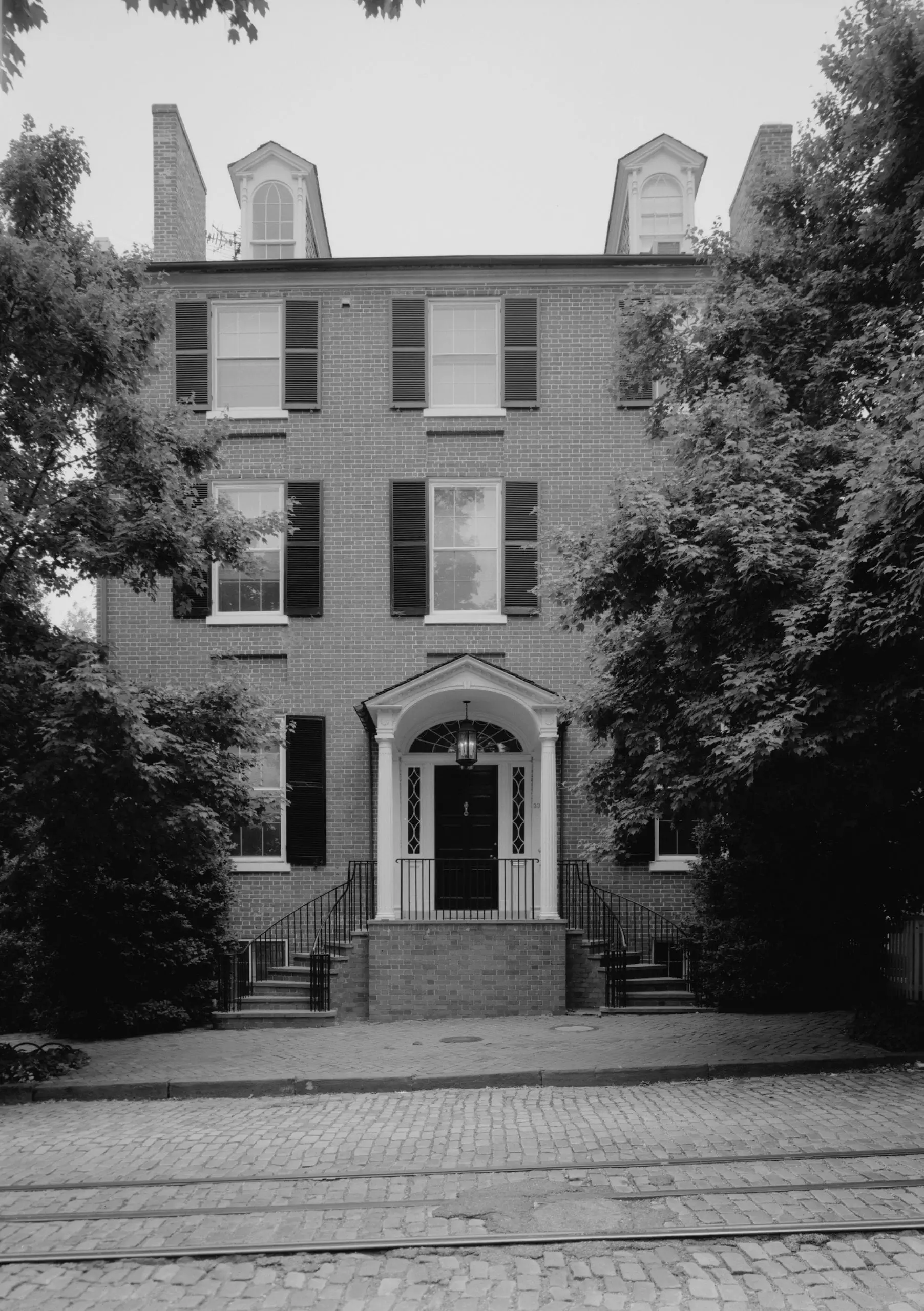
Before Baron Bodisco died, he made it clear that he wished Harriet to continue her life as a beautiful woman and find someone to make her as happy as she had him. Alexander de Bodisco died at their house on O Street NW in 1854. His funeral was attended in similar fashion as his wedding. His casket escorted by his two nephews and members of his household and Russian Embassy were dressed in his livery. He is buried in Oak Hill Cemetery in Georgetown. Shortly after his death, Harriet Williams Bodisco married a British officer, Captain Douglas Scott, and lived a second happily ever after.
